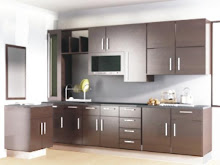By: Jim Brown
For couples who have just recently gotten married, or have decided to live together, choosing appliances for the home can become confusing. It may even be a source of conflicts. One appliance they must consider purchasing (if one has not been given to them as a wedding gift, or a housewarming present), is a blender. Blenders are wondrous contraptions. They are very useful in making beverages, soups, sauces as well as other delightful additions to sumptuous meals.
There are several factors that you may want to consider before purchasing a blender. You and your partner should first agree on a budget, the type of blender you want to buy, the particular model that you want, the special features that may suit your particular needs, and even the color and material of the blender.
There are generally two types of blenders: the traditional blenders and the immersion blenders. The traditional blenders have containers, called carafes, with markings for measuring purposes. These carafes have a cover which prevents the contents of the carafe from spilling while the blender is in operation. Traditional blenders are powered by a motor, which is located below the carafe. The motor has various speed settings and controls the rotation of the metal blades at the bottom of the carafe. The immersion blender, also known as a stick blender, has no container but has blades located within its mixing head. It is used by immersing the mixing head into the ingredients that you want to blend. It is powered by small motor located within its handle. This type of blender is used in blending soups and sauces placed in deep bowls or pots.
Depending on your budget, you may want to purchase a blender made of plastic or one made of stainless steel or some other durable metal. Blenders housed in plastic are cheaper and come in a wider array of colors compared to the more expensive ones housed in steel and other metals. However, blenders housed in metals are more durable and would serve you better in the long run. The blender's carafe also makes a difference. The carafe may either be made of plastic, glass or stainless-steel. Blenders with plastic carafes are obviously cheaper, but these plastic carafes scratch easily and are not practical. Glass or, if you can afford it, stainless-steel carafes are better choices since they are more durable and last for a long time.
Blenders generally have a set of buttons located at their base. These buttons control the speed of the blender. The average blender has buttons for low, medium, and high settings. More advanced models offer settings for up to twenty-four speeds, and some even come with touch-screen panels instead of buttons. The average blender runs on three hundred to up to six hundred watts of power. More expensive models can now run on higher power, even up to thirteen hundred watts. You don't really need that much power. A good blender can perform its task on lesser power.
Choosing a blender for your home does not have to be difficult. With a little patience, you and your partner can find the perfect blender for your kitchen.
About the Author:
James Brown writes about eBeanstalk bargains, Highlights.com coupon code and KimmyShop.com bargains
Subscribe to:
Post Comments (Atom)


No comments:
Post a Comment